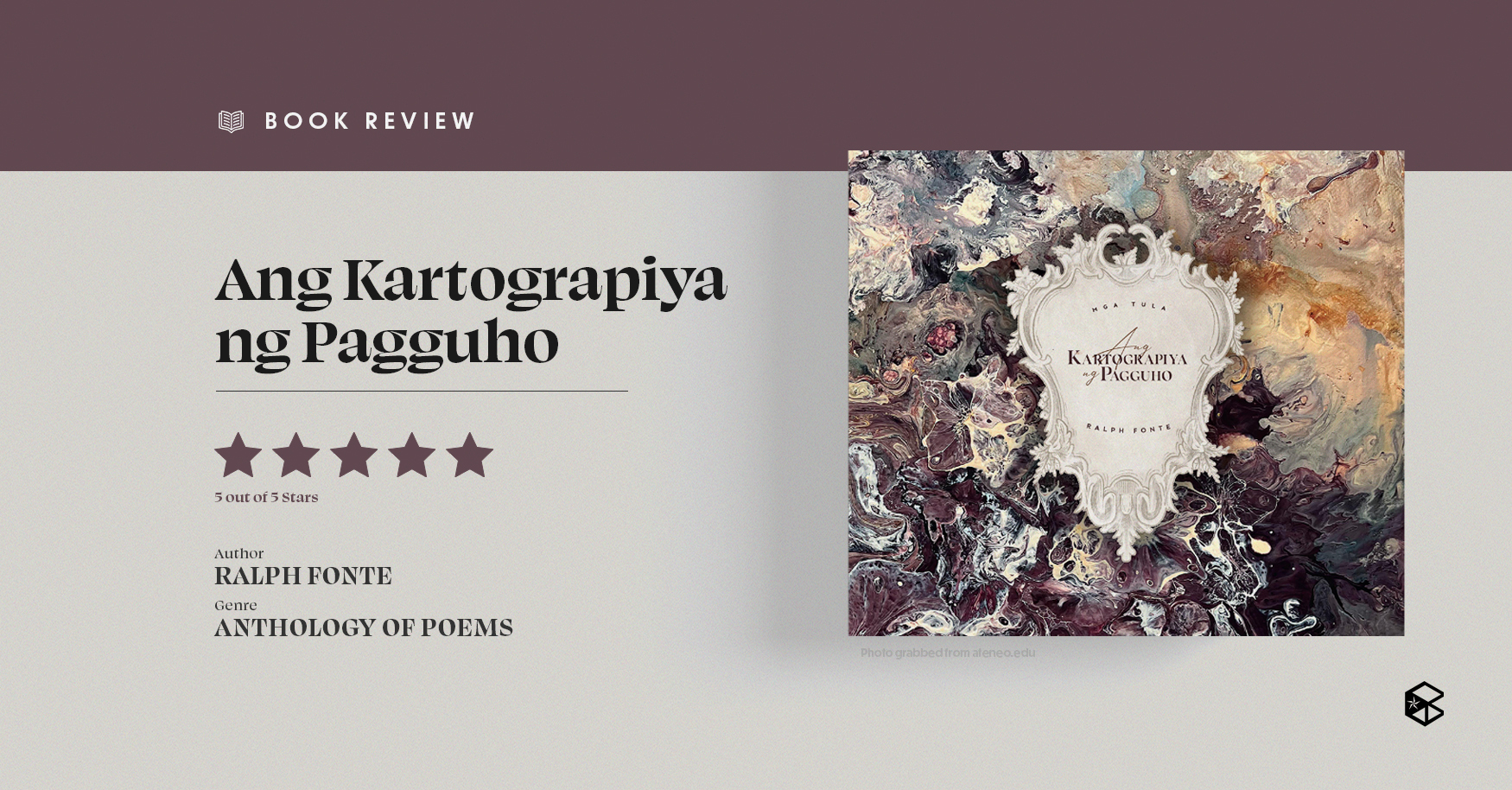Traditional and solemn, yet modern and satirical, Ang Kartograpiya ng Pagguho encapsulates readers through life’s familiar and unknown complexities, from fading memories and rekindling relationships to examining societal issues and politics. Yet, what makes this collection stand out is Ralph Fonte’s ability to harness the Filipino language through his extensive vocabulary, interconnecting his poems as a whole.
Set across four parts, the anthology did not fail in creating a diverse range of narratives in each poem. It depicted ordinary day-to-day moments that are relatable for anyone, as well as building worlds beyond the human imagination. It is evident that Fonte’s life experiences are clearly translated in each piece he crafted, allowing his readers to gain an insight into his perception of varying circumstances.
The art of constructing and collapsing worlds
Generally, classic Filipino poetry often revolves around the themes of romance, nationalism, and religion—embodying the ideal Filipino character—yet in this collection, such concepts were attacked in a more realistic sense. It was able to build various narratives consistently, whilst critiquing and dissecting its own elements. Consequently, each piece was ideally deconstructed to showcase its raw essence to its readers, resulting in unexpected conclusions.
As an admirer of literary titles, each piece in the collection was also excellently labeled, enhancing the anticipation of its readers to continually flip a page. Some notable titles were: “Mapa ng Sugat,” “Theatrvm Orbis Terrarvm,” “Panambitan sa Voyager 2,” “Takipsilim bilang IG Story,” and “Laro sa Baga.”
Furthermore, there was an abundance of allegory and parallelism depicted throughout the anthology, which proved to be timely and relevant to the current socioeconomic and political situation of the country. For instance, in the piece titled, “Sa Comments Section Matapos Manood ng Isa na Namang Video ng Pulis sa Akto ng Pamamaslang,” it examined the questionable allegiance of some citizens to the unlawful acts of the police, rather than the people they are serving. Meanwhile, there were also pieces that took its readers back in time, such as “Intramuros,” where the effects of Philippine colonization on one’s name, language, and identity were analyzed. The piece began in Filipino, but by the end of it, the author literally allegorized how the current generation speaks—in conyo:
“Entoces, en Manila, I won’t shut up
about the experience. I complain a todos
que no hay audioguias in the National Museum
unlike sa Museo del Prado.”
A mixture of poetic traditionalism and modernism
What makes the collection’s poetry even more engaging is the careful attention to detail, where it boasted a balanced amount of structured, prose, and modern forms of poetry. Each varied and captured the purpose of the message that it is imparting to its readers. The anthology was also not afraid in showcasing its versatility in terms of mood, where some pieces were heavily ambiguous and dramatic, while there were also satirical and humorous poems.
For instance, “27 [M4F] LF: Constant na Ka-Tiktok,” took a comical approach in displaying the current dating culture in the country. It exaggerated colloquial terminologies, phrases, norms, and habits of the current generation—a mocking impression of today’s young individuals:
“Don’t worry, I’m not a creep naman
And I can prove it. I’m moreno, I’m lean and fit,
Na graduate from the Ateneo. Deep voice. Big d*ck.
I mean, not that it matters.”
The only critique of this collection would be its limited glossary and the lack of an appendix, where readers could have a lighter experience in understanding the essence of the poems—given that the current generation may not be familiar with some of its references, phrases, or words. Furthermore, the anthology also contained foreign vernacular, yet readers were not provided with a Filipino translation to guide them in their interpretation of these certain pieces.
Nevertheless, the essence of Fonte’s poems lies in the reader’s realization of the varying facets of life’s misfortunes. Are they able to transfigure their brokenness into healing? Or will they allow the world’s circumstances to collapse on them?
Ang Kartograpiya ng Pagguho by Ralph Fonte may be purchased at the Ateneo de Manila University Press website, as well sa Lazada and Shopee.


